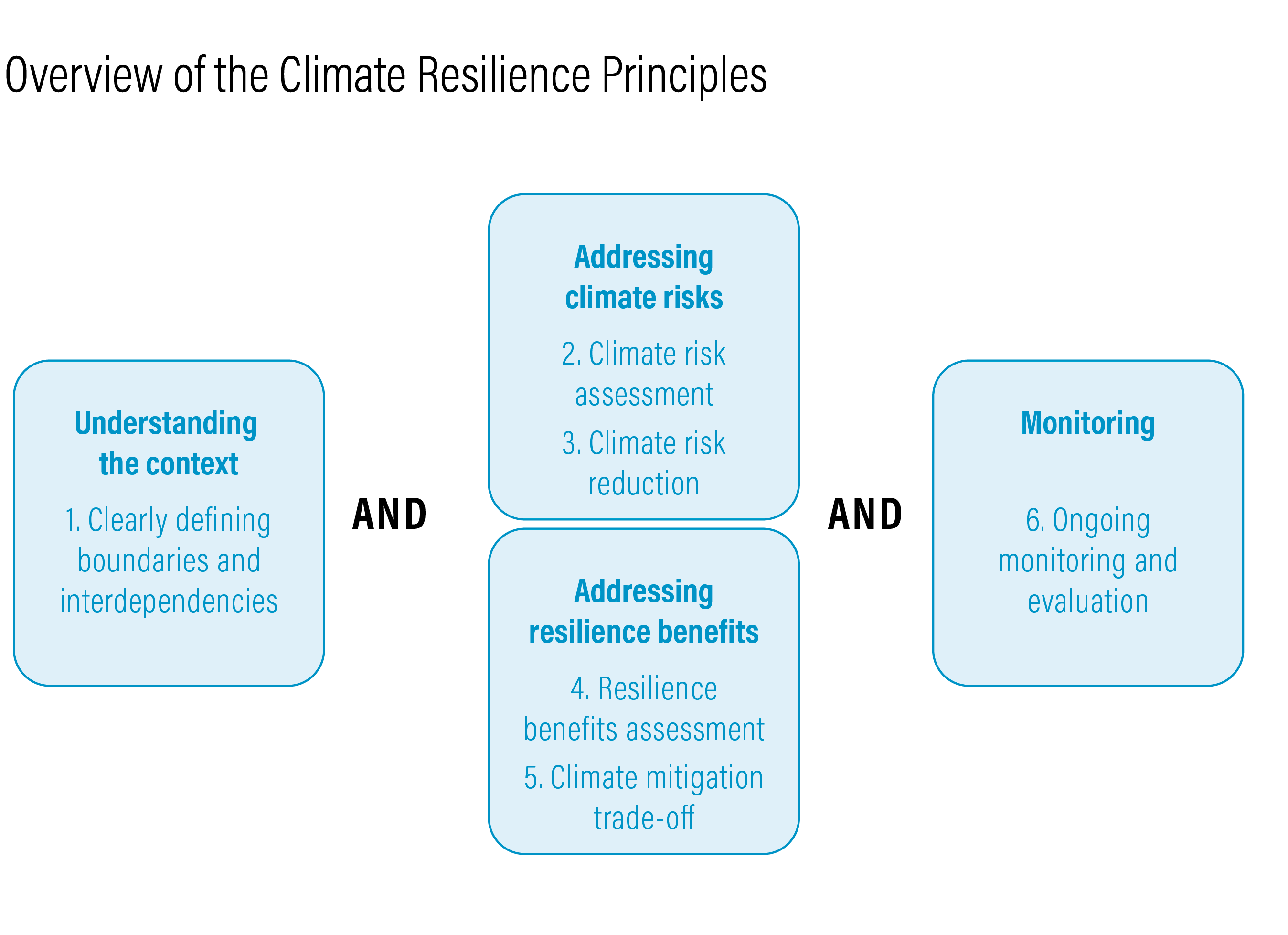Climate Resilience Principles aim to boost green bonds
More investors are seeking out investments aligned with a low-carbon and resilient future, but there’s still a long way to go.
T he recent UN Climate Action Summit made one thing clear: accelerated investment in climate change resilience is urgently needed to ensure the well-being of economies, communities, and people. According to the Global Commission on Adaptation, investing $1.8 trillion globally in five areas from 2020 to 2030 could generate $7.1 trillion in total net benefits.
One way for governments, companies, and other entities to raise money for these new investments is through bonds. By issuing bonds, public and private actors can borrow money from investors — at lower costs — for projects that help increase climate resilience, like climate-resilient crops, sea walls to stave off rising sea levels, or the installation of early warning systems to alert people to extreme weather events. Bonds that are specifically designed to fund environmentally-friendly activities are called green bonds.
The good news is that the green bond market has grown rapidly since the issuance of the first green bond in 2007, and demand for green bonds is higher than supply. Most of these bonds focus on climate change. The bad news is that green bonds still accounted for less than 0.2% of all bonds issued last year. Only 3-5% of the proceeds of these green bonds can, in turn, be traced to climate resilience (~$12 billion). There is thus a vast opportunity to grow the resilience bond market.
The Climate Resilience Principles, launched just last week, answer a critical question that has been a barrier to growth: What actually is a climate resilience investment? For the first time, stakeholders have clear guidelines as to what should qualify.
Why Definitions Matter
A growing number of investors are seeking out investments that are aligned with a low-carbon and resilient future. A recent example of this is the September 2019 launch of the Net-Zero Asset Owner Alliance by 12 of the world’s largest asset owners, representing more than $2 trillion.
Green bonds attract investors because they provide a relatively safe investment with a predictable return while supporting sustainability.
But green bonds will only be appealing and effective if people can be sure that bond proceeds are used for activities that are actually climate-aligned. If investors cannot be confident that bonds are truly “green,” they will hesitate and may continue to invest in regular bonds instead.
This can be a particularly big challenge when it comes to bonds to support climate resilience. Unlike climate change mitigation, which has the relatively clear goal of greenhouse gas reduction, climate resilience can encompass a very broad number of activities. So broad, in fact, that a clear definition of what constitutions a resilient investment has been difficult to pin down.

Green bonds still have a long way to go. Photo by Markus Spiske/Unsplash
Introducing the Climate Resilience Principles
The Climate Resilience Principles provide high-level guidance for both bond issuers and investors seeking to determine when projects and assets are compatible with a climate resilient economy. Developed under the guidance of an Adaptation and Resilience Expert Group, comprised of more than 30 specialists in adaptation and resilience, the Principles are informed by a diverse range of views and experiences.
The principles focus on activities that address physical risks of climate change and cover actions that aim to make a particular asset more resilient (like making a new bridge stronger), as well as actions that increase the resilience of a broader system (like investments in national data collection and monitoring). Both are important.
Resilience-related actions can’t be easily be written as a simple list since an activity may support resilience in one location but not in another. For example, a new water irrigation scheme may or may not support climate resilience depending on predicted weather patterns. Because of this, the principles spell out information issuers should gather to confirm that they’re investing in resilience. This includes information on:
- The relevant climate risks that the investment is meant to address,
- How the investment helps increase resilience to these risks, including how it deals with uncertainty,
- Potential additional resilience impacts of the investment,
- Whether the investment has positive or negative effects on climate change mitigation efforts (i.e. does it increase or decrease emissions),
- How the investment results are being monitored and evaluated over time.

Source: CBI. Design: World Resources Institute
The European Bank of Reconstruction and Development became the first issuer to use the principles to structure a bond offering when they issued a $700 million Climate Resilience Bond last month. Hopefully this is the start of a dramatic uptick in the issuance of, and investment in, bonds for climate resilience and we’ll achieve the ultimate goal of the principles: to motivate capital markets to support climate resilience and implementation of the Paris Agreement.
The ideas presented in this article aim to inspire adaptation action – they are the views of the author and do not necessarily reflect those of the Global Center on Adaptation.